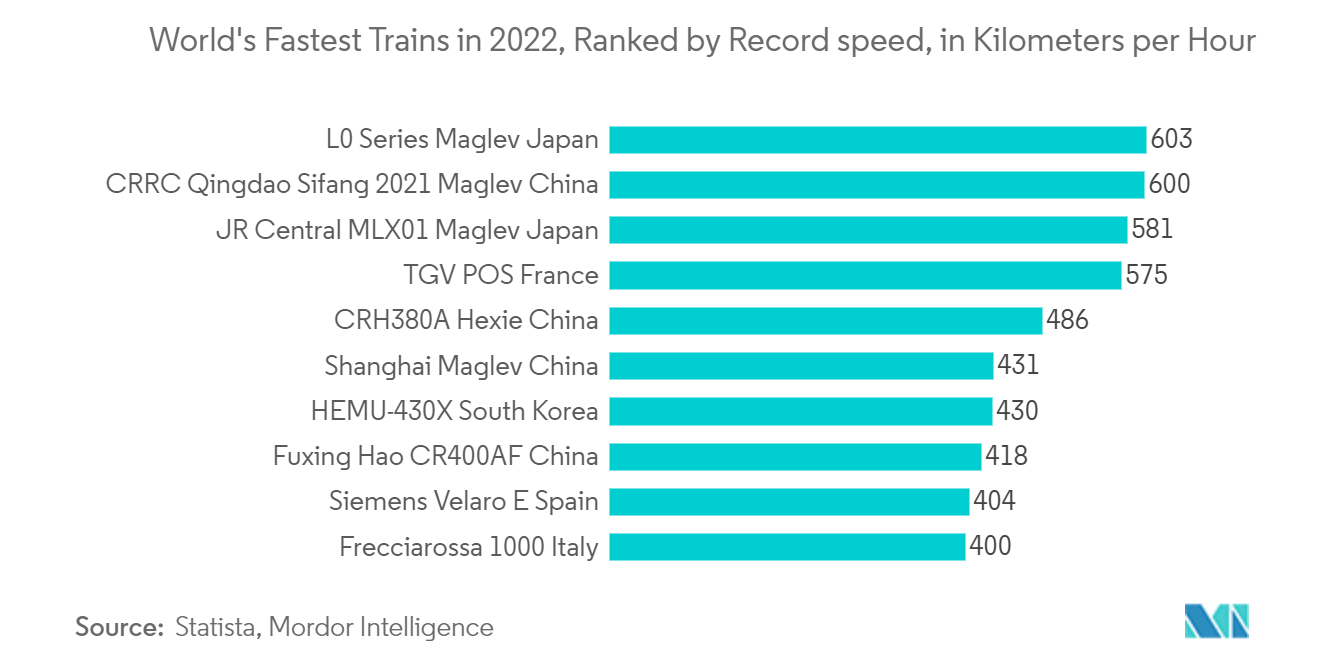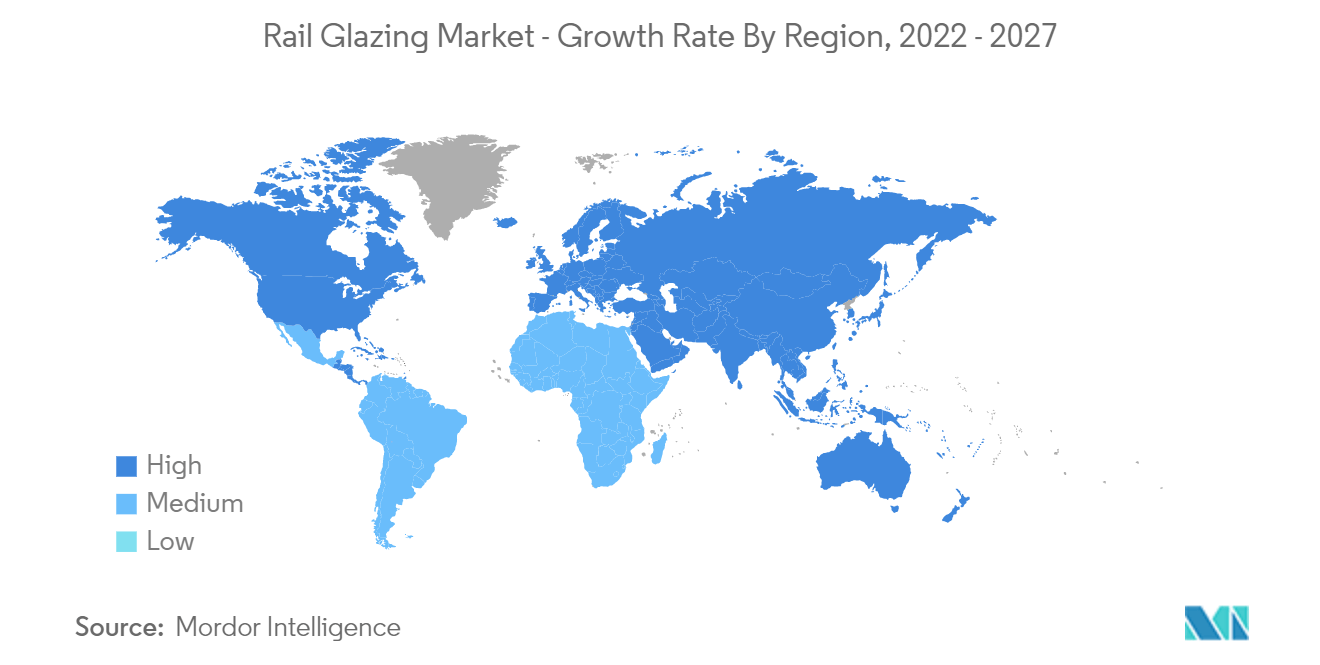Market Trends of Rail Glazing Industry
This section covers the major market trends shaping the Rail Glazing Market according to our research experts:
Rising Penetration of Glazing Systems in Trains to Drive Demand in the Market
In general, glazing systems for passenger railcars have to meet functional requirements such as transparency, optical quality, and maintainability. In addition, they have to meet safety requirements such as emergency egress, rescue access, fire tolerance, and occupant containment. Government agencies, train operators, etc., all intend to improve their railway systems and provide more luxurious and comfortable travel experiences. Such trends encourage players to use glazed components in the coaches of trains. For instance, in October 2021, the Indian railway introduced Vistadome coaches to give its passengers a new and unique way to travel for a lifetime experience. These coaches offer passengers a panoramic view of pristine nature, giving them an immersive travel experience. The glass windows and rooftops of Vistadome coaches are manufactured with laminated glass.
Further, technological advancements for high-speed rails require highly efficient rail glazing products to offer enhanced performance and durability. For instance, the side window glass used by the Chinese high-speed rail system has minimized the permissible error in terms of thickness and flatness of the glass by homogenizing glass materials. In March 2022, the new ICE 3neo (Velaro MS) high-speed train, based on the proven ICE 3 platform, was unveiled by Siemens at its ICE plant in Berlin-Rummelsburg. The new ICE 3neo trains are fitted with frequency-permeable glass window panes featuring a fine grid laser-lasered into the metal layer on the glass, allowing mobile phone signals to enter the train more easily.
In November 2021, Alstom's TGV-M, the fifth generation of high-speed trains, requested the assistance of Eurailtest and its partner, the AEF, to measure the resistance of the TGV-M's windows to aerodynamic forces and pinpoint cracked glass and sealing defects potentially disrupting train operations.
Thus, the aforementioned trends indicate that the rail glazing market across major countries is anticipated to have optimistic growth during the forecast period.

Asia-Pacific Region Likely to Play Key role in the Market
Over the recent years, the demand for improving passenger capacity, issues related to green, safe, and economical public transportation, and replenishment of current rolling stock acts as primary driving factors for the growth of the rail glazing market across major countries in the world.
For instance, in March 2022, the Indian railways announced a National Rail Plan (NRP) for India - 2030. The plan is to create a 'future-ready' railway system by 2030. The NRP is aimed at formulating strategies based on operational capacities and commercial policy initiatives to increase the modal share of railways in freight to 45%. As part of this initiative, the government is said to assess rolling stock requirements for passenger traffic and wagon requirements for freight.
In March 2022, Egypt and South Korea signed a memorandum of understanding on cooperation in the field of rail transport. This collaboration with the South Koreans is marked by numerous contracts signed with the multinational Hyundai Rotem, for the design of several hundred metro cars for Cairo Metro Line 2 and 3, the local construction of locomotives and electric trains, as well as the modernization of signage.
With the growing focus of governments on overhauling and modernizing railway systems, players operating in the rail glazing market are expected to find numerous opportunities. For instance, in January 2021, Indian railways introduced a smart window feature. The railways have installed this smart window in the New Delhi-Howrah Rajdhani train. This feature enables glass windows to turn glass from a transparent to an opaque state with the click of a switch. It also cuts UV radiation and acts as privacy glass.
In July 2021, China debuted its first-ever glass-bottomed sky train, which would enable commuters to take a 270-degree view of the picturesque landscape of the country. It currently runs 11.5 kilometers and features four stations that connect important tourist points in the city. The train weighs about 2.5 tons, which is 0.5 tons less than traditional trains.
The latest orders for accommodating trains by key Asia-Pacific countries encourage players to design active strategies to make their mark on the market. Based on the aforementioned developments, it is expected that the Asia-Pacific region will have notable growth and opportunities in the future.


